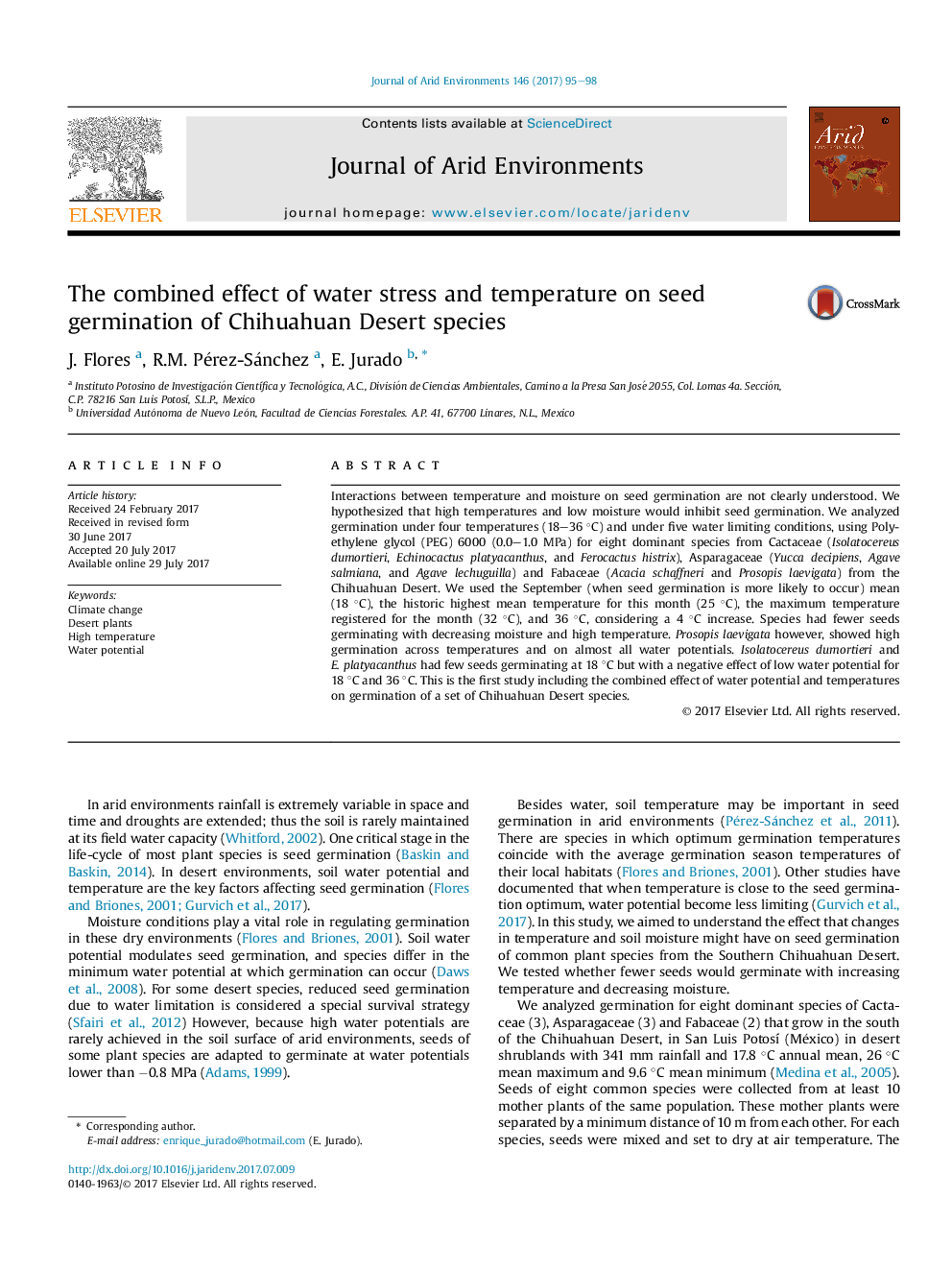| Article ID | Journal | Published Year | Pages | File Type |
|---|---|---|---|---|
| 5744284 | Journal of Arid Environments | 2017 | 4 Pages |
â¢High temperatures and low moisture would inhibit seed germination.â¢Germination under four temperatures and five water limiting conditions.â¢Species germinated less with decreasing moisture and high temperature.â¢Prosopis laevigata showed high germination across temperatures and water potentials.â¢Prosopis laevigata could become a dominant species in future landscapes.
Interactions between temperature and moisture on seed germination are not clearly understood. We hypothesized that high temperatures and low moisture would inhibit seed germination. We analyzed germination under four temperatures (18-36 °C) and under five water limiting conditions, using Polyethylene glycol (PEG) 6000 (0.0-1.0 MPa) for eight dominant species from Cactaceae (Isolatocereus dumortieri, Echinocactus platyacanthus, and Ferocactus histrix), Asparagaceae (Yucca decipiens, Agave salmiana, and Agave lechuguilla) and Fabaceae (Acacia schaffneri and Prosopis laevigata) from the Chihuahuan Desert. We used the September (when seed germination is more likely to occur) mean (18 °C), the historic highest mean temperature for this month (25 °C), the maximum temperature registered for the month (32 °C), and 36 °C, considering a 4 °C increase. Species had fewer seeds germinating with decreasing moisture and high temperature. Prosopis laevigata however, showed high germination across temperatures and on almost all water potentials. Isolatocereus dumortieri and E. platyacanthus had few seeds germinating at 18 °C but with a negative effect of low water potential for 18 °C and 36 °C. This is the first study including the combined effect of water potential and temperatures on germination of a set of Chihuahuan Desert species.
